In 1889, John Power & Son Irish Whiskey became the first spirits company in the world to make miniature bottles. That was 63 years before the first commercial jet airplane, 85 years before the first hotel minibar, and some 125 years before everyone started making a fuss about tiny cocktail kits. These travel-related inventions all have two things in common: They rely in some form or fashion on the mini bottle, and they all can thank a historic enterprising whiskey brand with famously thirsty private transportation workers.
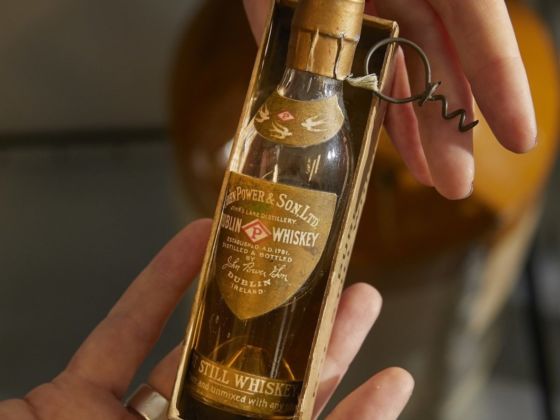
There are two stories to how the mini bottle started. The first is that inspiration came from the coachmen who ferried the Power family around Dublin and their surrounding estates. The coachmen would carry a small flask on their travels, just enough for a swallow of whiskey to keep them warm without getting them drunk. With these men in mind, a small travel-ready bottle was invented.
The second story is that the incredibly wealthy Power family wanted to give distillery workers a way to sip the product they worked on. Irish whiskey was some of the most expensive whiskey in the world at the time, and wasn’t affordable on even the best working class wages. Mini bottles made tastes of the whiskey available to everyone rather than just the well off.

Photo: Powers Irish Whiskey
It’s hard to parse the truth of someone’s motivations after more than 130 years, especially when you take into account the Irish propensity for storytelling. I’ve sat in Dublin pubs and listened to legends and histories loaded with details that make me pause and wonder if it’s too good to be true. I’d think the same about the mini bottles’ coachmen inspiration if it weren’t told to me by Carol Quinn, the archivist for Irish Distillers. Speaking in the Irish Distillers office in Midleton, County Cork, she laid out artifacts and documentation for each historical footnote she told me while explaining the centuries-old history of the Power family. Quinn is not someone who tolerates embellishment.
The idea of using coachmen and their swallows of whiskey as inspiration isn’t that far out, either. Powers references the three coachmen who manned each carriage — a driver and two assistants, one in the back and one in the front — with three embossed swallows on every bottle (birds, not drinking coachmen, though it again is a nod to the swallows of whiskey). Of course, the swallows could also represent the Irish swallows who migrate to the region every year around distilling time. Every history in Ireland, it seems, is one part entertaining story and one part hard truth.
Regardless of where the inspiration came from, there’s no denying that it changed the way the world drinks.
The first commercial mini bottle of liquor
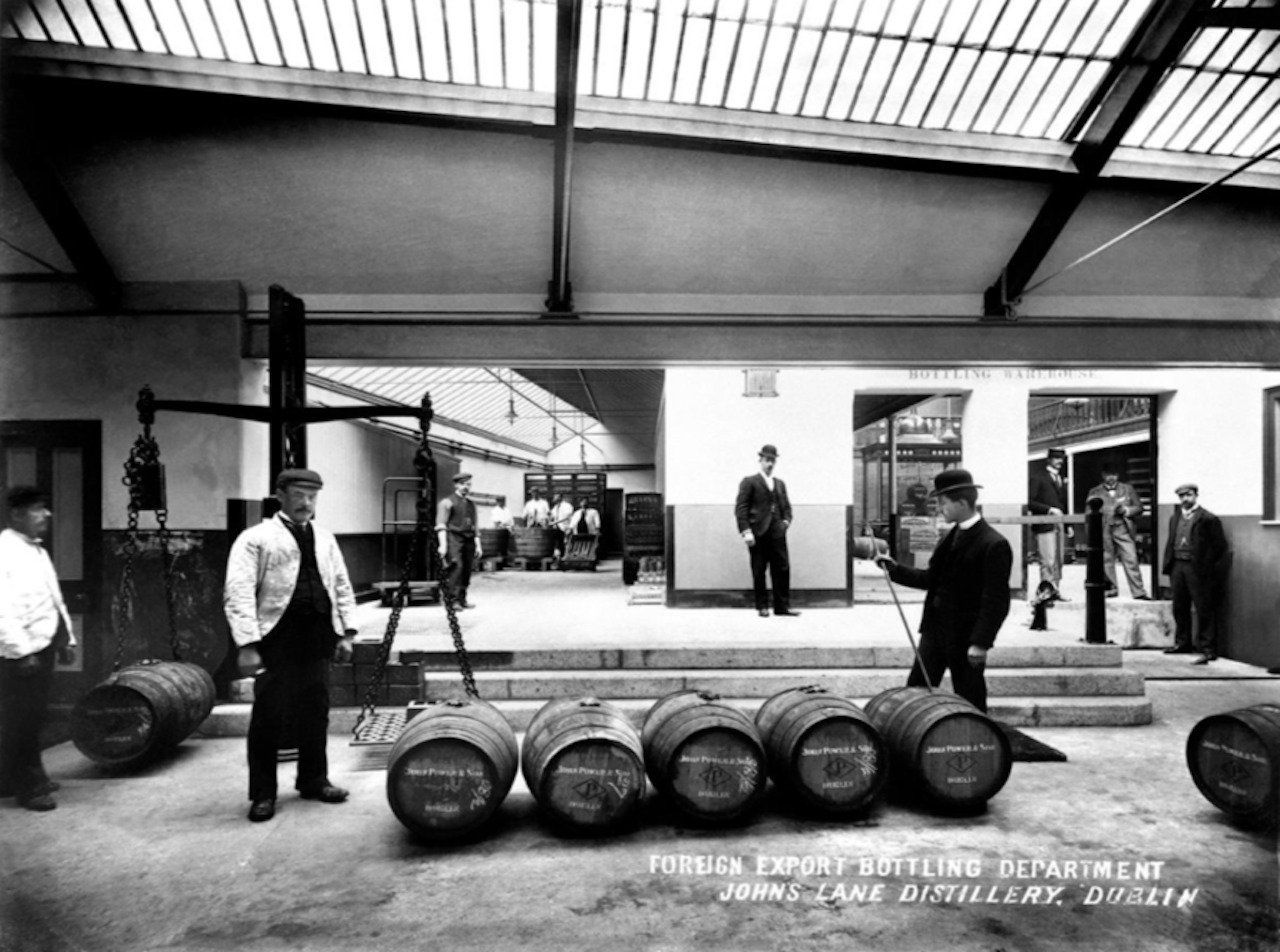
Photo: Powers Irish Whiskey
Powers (the apostrophe dropped from the brand name over the years) was one of the first distilleries in Dublin to bottle its own spirit in 1886. Prior to that, all liquor was sold by the barrel to pub owners and middle men who would either sell directly from the cask or bottle it themselves — sometimes after watering the whiskey down some. Powers’ bottled whiskey was certified straight from the source and identified by a gold label with the signature diamond P logo similar to the one found on bottles today.
Powers expanded its bottling operation in 1889 when it moved from the distillery on John’s Lane to a larger space on Drury Street. This is where the mini, lovingly called Baby Power, was born. The corked bottle held 71 milliliters (around 2.5 fluid ounces). They were too small to be opened with a traditional corkscrew, so each one came with a mini corkscrew to pop the top off without making a mess.
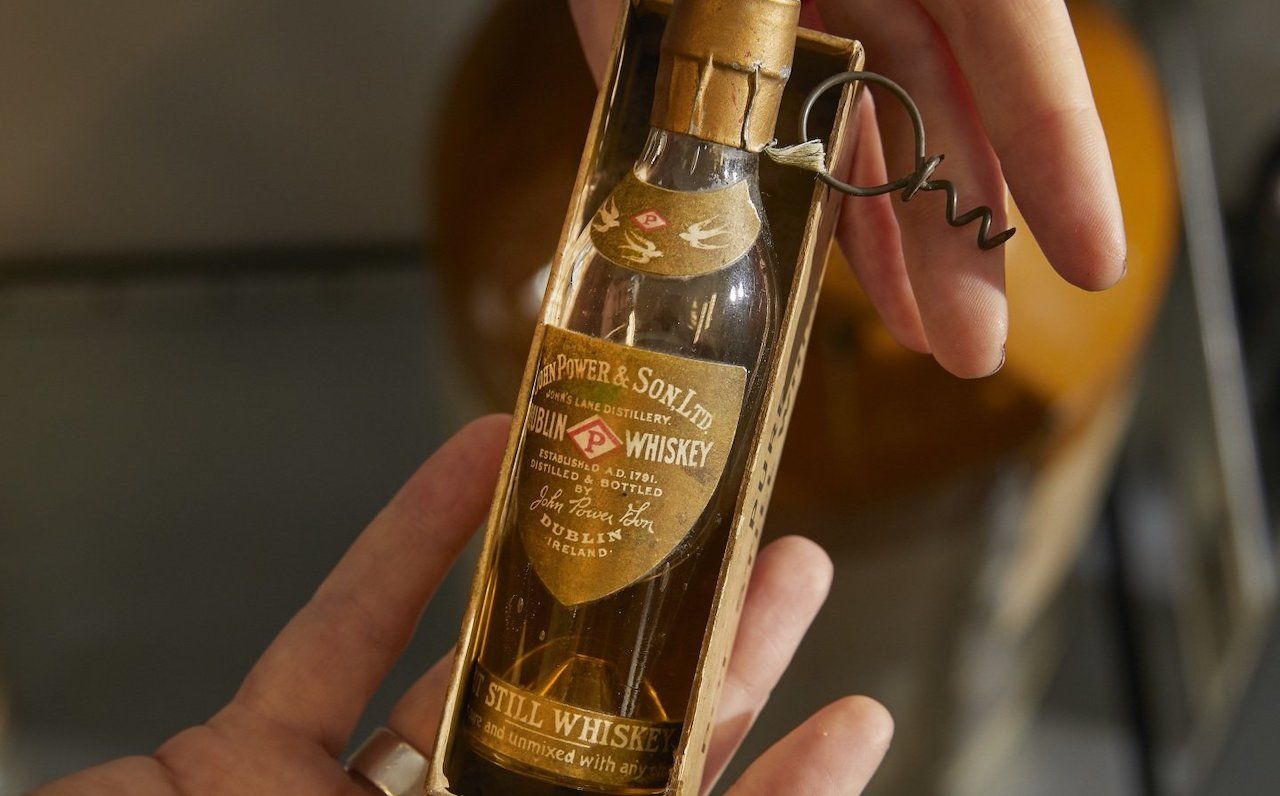
Photo: Powers Irish Whiskey
The Baby Power wasn’t the very first small bottle of liquor in the world, and there’s not a hard date on when liquor companies made minis for non-commercial uses. Salespeople used to bring small bottles as samples to bar and tavern owners in the 1800s, though the samples were for the salespeople and the bar owners only. David Spaid, the owner of a magazine called The Miniature Bottle Collector that published from 1974 to 2005, told me over email that he has a bottle in his collection dating to 1862. Other collectors he’s met have similar ages.
“It is generally accepted among miniature bottle collectors that the first labeled minis were made in the 1890s,” David Smith, coordinator of the Miniature Bottle Library, wrote over email. “Your 1889 date fits with this. There may have been (probably were) embossed bottles without labels prior to the 1890s, but probably only a very few years prior. There were certainly miniature ceramic jugs that pre-date glass bottles. These come from both Scotland (crocks) and extensively from the USA.”
The reason smaller bottles weren’t widely produced is simple: Modern mechanized glass production is a relatively new invention.
It wasn’t until the mid-1800s that parts of the glass bottle production process started to mechanize and prices on bottles started to drop. The first patents for semi-automatic bottle making machines were in 1859 and 1861, Peter Schulz wrote in his book Baffle Marks and Pontil Scars: A Reader on Historic Bottle Identification. Machine-made bottles started to be more common by 1886, he wrote.
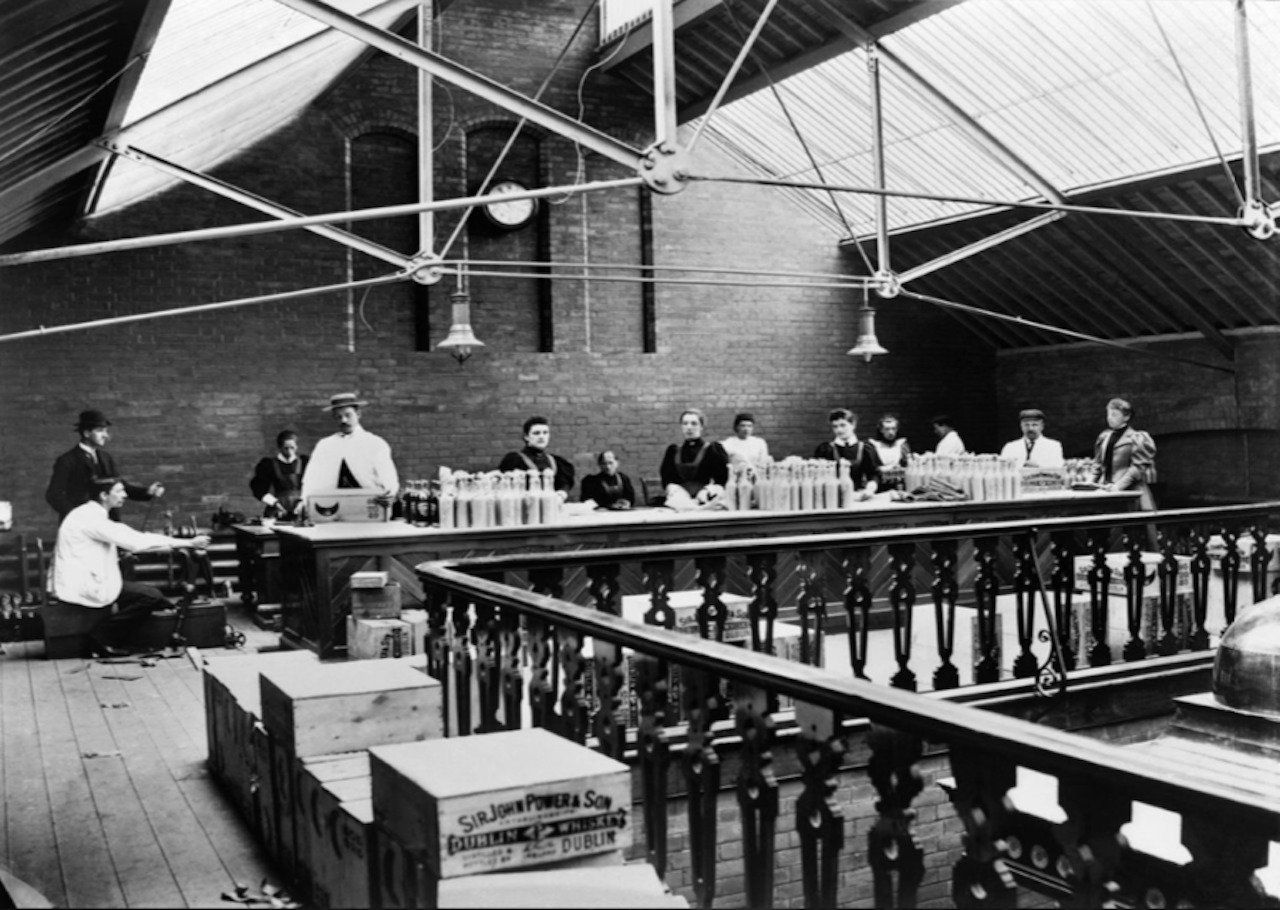
Photo: Powers Irish Whiskey
These machines still took a lot of manpower. A paper published by the Federation of Historic Bottle Collectors notes that it took three skilled workmen and two unskilled boys to operate. It wasn’t until 1903 that the first fully automatic bottle machine was invented by an American named Michael J. Owens.
The extra cost and effort to produce the Baby Powers was worth it. Dubliners and anyone hankering for a small taste of whiskey were so familiar with the small Powers bottles that, for a time, every mini was called a Baby Power. It wasn’t unheard of, Quinn said, for someone to order a “Baby Power of gin.”
The Baby Power lives on
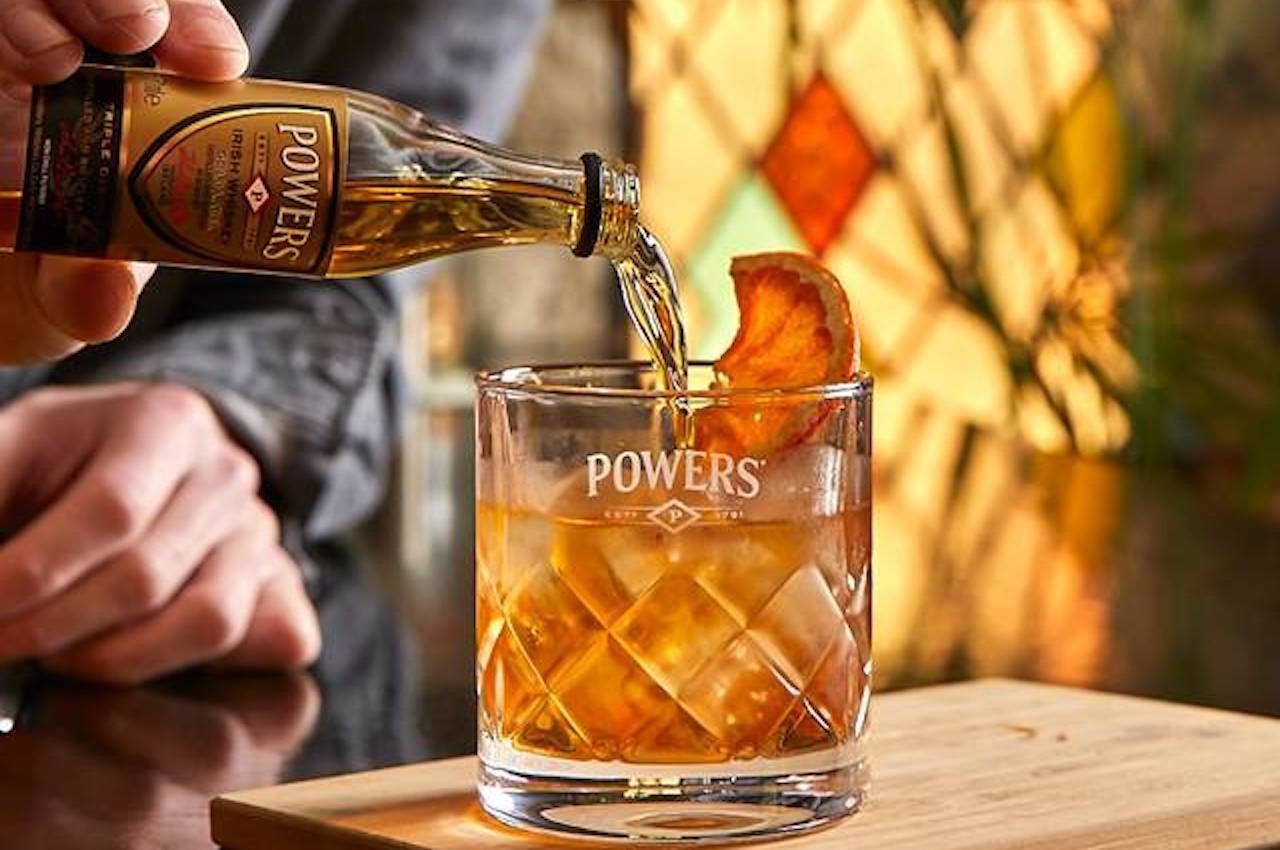
Photo: POWERS Irish Whiskey/Facebook
You can see the original bottling plant where it all started for yourself in Dublin. What was once the Foreign Export Hall in 1889 is now The Market Bar, a gastropub and tapas bar with tall arching ceilings and Spanish-inspired small plates (plus a full bar, of course). The Market Bar is part of what’s known as Powers Quarter, a collection of six bars in Dublin within walking distance from the original John’s Lane Distillery that tell the history of the brand.
Next door to The Market Bar in the same former bottling plant is a bar called Idlewild. The stained-glass door has a diamond P embedded, just one of the ways the bar pays homage to its history. For any traveler who has enjoyed a swallow of whiskey from a small bottle, Idlewild offers drinks both comforting and original. The minis that were once bottled here are now served alongside cocktails made with Powers so you can add a little extra to your drink if you prefer.
It’s impossible to say when the mini bottle would have taken off without the success of the Baby Power. Sales of the size feel inevitable now, and it’s hard to imagine a world without minis filling hotel fridges, keeping airplane passengers satiated, and filling the homes of collectors.